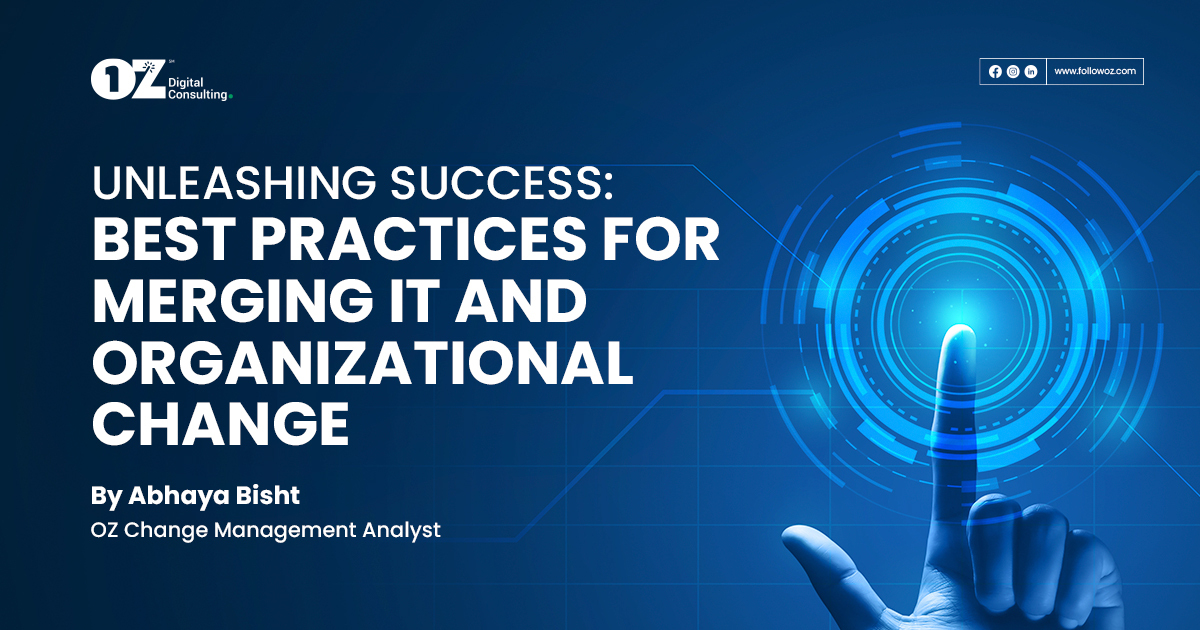By: Abhaya Bisht, OZ Change Management Analyst
In today’s dynamic business landscape, effectively integrating IT initiatives with organizational change efforts is no longer a luxury, but a necessity.
If that sounds daunting, don’t worry—OZ, drawing on more than a quarter century of experience, has put together a list of four best practices that will help ensure your company remains competitive in the digital era.
- Develop a Strategic and Integrated Approach. It is crucial to recognize that IT and organizational change are interconnected and need to be managed in alignment with each other. This requires close collaboration and communication between IT and business leaders as well as a shared understanding of the overall organizational strategy and goals. By ensuring IT initiatives are well-integrated with organizational change efforts, organizations can achieve a seamless transition and drive meaningful outcomes.
- Involve Stakeholders at All Levels. Stakeholders, including employees, customers, partners, and other relevant parties, should be engaged from the beginning of the change process. This includes involving them in the planning, design, and implementation phases, and soliciting their feedback and input. By involving stakeholders, organizations can gain valuable insights, build ownership, and foster commitment among employees, which are essential for driving successful outcomes.
- Develop a Robust Change Management Plan. A robust change management plan should outline strategies for communication, training, and support to facilitate the transition. It should also address potential resistance to change and provide strategies to mitigate that resistance. Additionally, the plan should be flexible and adaptable, considering the unique needs and characteristics of the organization. By having a well-structured change management plan, organizations can navigate the complexities of change and minimize disruptions.
- Foster a Culture of Agility and Innovation. This includes promoting a mindset of continuous improvement, encouraging experimentation, and providing opportunities for learning and skill development. Organizations should create an environment where employees feel empowered to adapt to new technologies, embrace change, and contribute to the organization’s innovation efforts. By fostering a culture of agility and innovation, organizations can stay ahead in the ever-changing business landscape.
Conclusion
Merging IT and organizational change is crucial for organizations to thrive in today’s digital world. Are you ready to take the first—or next best—step on your digital transformation journey? OZ experts will work side by side with you to fully leverage our relationships with the world’s leading technology companies so you can reap the benefits of best-in-class implementation, integration, and automation—making the most of your technology investments and powering next-gen innovation. Contact us today.



